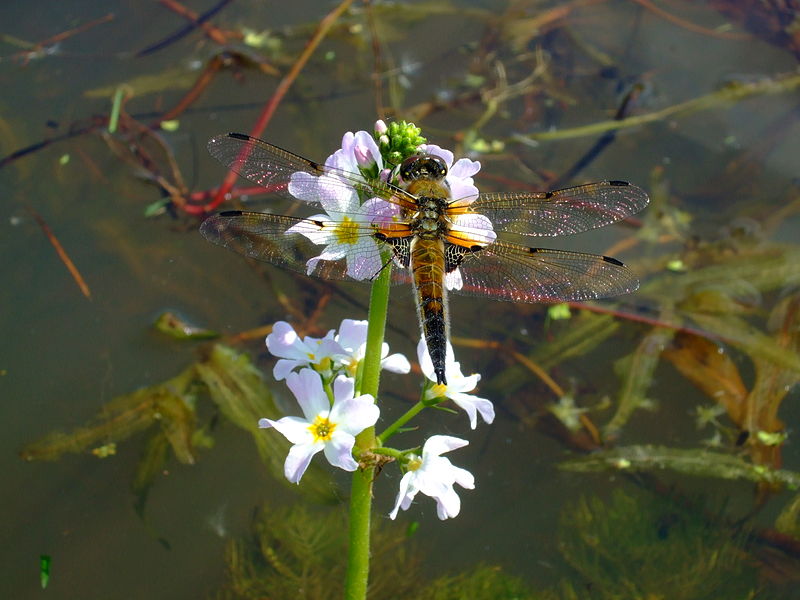
Dragonflies belong to a group of insects that have very small antennae, very large eyestwo pairs of transparent wings, and colorful elongated bodies. There are over 3000 species of dragonfly worldwide and over three hundred in North America where they live near streams, ponds, rivers, and lakes. Dragonflies range in size from .8 inches long to 4.3 inches long and many have metallic or iridescent colors. The mouth parts are adapted for biting.
Dragonflies resemble damselflies and are closely related but can be distinguished in several ways. Adult dragonflies are strong fliers while damselflies have a fluttery flight. When at rest an adult dragonfly’s wings are out flat while damselflies fold their wing together over their bodies. The large eyes of a dragonfly are together at the top of the head while those of a damselfly are on the sides of the head. Dragonfly larvae have shorter and thicker bodies with gills on the inside of the abdomen while damselfly larvae have longer and narrower bodies with fin-like gills at the end of the abdomen. The eggs of dragonflies are round and about half the length of the cylindrical damselfly eggs.
Both adult and larval dragonflies are predators. Adult dragonflies feed on a large variety of other fauna including mosquitoes, gnats, flies, flying ants, termites, midges, mayflies, damselflies and other dragonflies. Larvae are aquatic and consume anything they can capture in the water including scuds, tubifex worms, water beetles, mosquito larvae, small fish, mayfly larvae, damselfly larvae and other dragonfly larvae.
Dragonflies undergo incomplete metamorphosis so have only three life stages: egg, larvae (nymph), and adult. A female dragonfly mates in an elaborate process involving flying in tandem with the male in the wheel or heart position. Depending on the species the female deposits her eggs inside a plant tissue or shakes them out on the water or on an emergent plant. The eggs hatch in about a week and the nymphs live beneath the surface of the water for three weeks to five years depending on the species while they feed, grow and molt from six to fifteen times. The adults that eventually emerge from the water live less than a couple of months as they start the cycle again.
Attracting dragonflies involves having a water feature since the larvae are aquatic. If you have a natural creek, stream or pond, or live by a river or lake increase the plant diversity nearby to attract the food that the larvae need. Although adult dragonflies do not use nectar or pollen for food they need plants for cover and to attract their food source so diverse plant material is important for them too. Avoiding broad spectrum insecticides is also important.